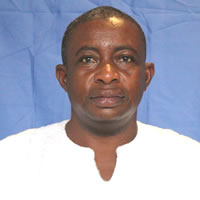Education
Education is seen as the backbone of every economy and as such one of the most important indicators of development. Currently more than 65% of the school going age Population can now access primary education within 3-4km distance. The achievement is through the collaborative efforts of Ghana Education Service and NGOs operating in the education sector. The District has a total of Eighty-two (82) educational institutions comprising Thirty-Two (32) Day Nurseries, thirty-One (31) Primary Schools, Sixteen (16) Junior High Schools, Two (2) Technical/Vocational institute and One (1) Senior High School.
A number of NGOs have played and continue to play various roles in the development of educational infrastructure in the District. Nevertheless, there is still much to be done in view of the increasing demand for basic education. Some of the schools seriously lack furniture as children sit on stools and stones in class.
The schools in the District are distributed according to five (5) circuits namely Daffiama, Fian, Bussie, Issa and Kojokperi. This aim is to enhance effective monitoring of school activities by circuit supervisors in view of the increased enrolment in primary schools and the need to improve upon the quality of teaching and learning.
There is a relatively fair distribution of educational facilities among the circuits as far as Pre School and basic educational facilities are concerned. Only one circuit (Daffiama) has SHS. Most of the schools now have proper toilet facilities, Urinal and drinking water. Also none of the JHS has library facilities. With the exception of Daffiama SHS none of the schools have access to ICT. Besides there is inadequate furniture and teaching and learning materials at all levels.
School Enrrolment
Currently the gross average enrolment rate in Primary schools is about 99% which is far above the national target of 88.5%. Girls’ enrolment at the primary school level is higher (50.3%) than that of the boys (49.6%). This has been the result of a number of interventions put in place by government (capitation grant) and some NGOs to arrest low enrolment and high dropout rate particularly for girls at the JHS level. The gross enrolment at JHS level (52%) is when compared to other levels enrolment is relatively better. However there are instances of school dropout among girls at the JHS level due to teenage pregnancy, child marriages and elopement hence the need for more vigorous education and sensitization among JHS girls and parents.
The School Feeding Programme
In 2005, the Government of Ghana initiated the Ghana School Feeding Programme. The Daffiama-Bussie-Issa District being a newly created district has a total of about (30) Thirty schools benefiting from the SFP. The Government releases GH¢ 0.80 per school pupil per day for their feeding and these monies are released through the District Assembly. Each school has a caterer and a number of cooks for the running of the programme. Meals are provided to the school pupils once a day, five times in a week. These meals are prepared depending on the daily attendance at each school. Table 17 below gives a break down with their enrolment rates:
Staffing in Basic Schools
There has been a significant change in the staffing situation following the national policy on posting of teacher across the country. Teachers were posted right away from the national directorate of education to any part of the country where his/her service is needed. The district has a total of 393 teachers in pre-school, primary and JHS. Out of the total of 393 teachers, 75% are trained whiles 25% are untrained. In term of gender about 76% are Males whiles 24% are females. The picture is made clearer in table 1.13 below. Most schools in the remote areas are still poorly staffed.
In terms of training, 51% and 40 % of Primary and JSS school teachers respectively currently have the requisite qualification. There is the need to ensure equitable and fair distribution of qualified teachers among the Primary and JHS to improve upon the quality of teaching especially the Primary level where trained and competent teachers are most needed. The current teacher-pupil ratio is 1: 34 and 1:16 at the primary and JSS respectively. The enrolment at the primary school is just the right pupil teacher ratio at the primary. However the low enrolment levels at JHS is as a result in school dropout, migration to illegal mining sites etc. Table 1.14 below presents the staffing situation in both Pre-school, primary and JSS.
Generally, the problems in the educational sector include:
• Inadequate staffing
• Inadequate teachers bungalows
• High dropout rate at the JSS level especially for girls.
• Inadequate logistics for monitoring
• Inadequate incentives for teachers in deprived communities
Skill and Entrepreneurial Development for Youth
The District has two (2) vocational/technical schools - Issa Youth Leadership Training Centre and St. Theresa vocational school- which trains the youth in a wide range of skills including weaving, carpentry, soap making, batik tie and dye and dress making. There are also individual smock weaving and blacksmith industries in the district providing apprenticeship training to the youth. Other existing vocations such as carpentry, hairdressing, and dressmaking also contribute in the training of the youth.
This project after completion will provide advanced technical and vocational skills to the youth majority of whom are drop out who lack employable skills. It will also transform the economy by providing the needed technical skills for accelerating the establishment and development of small scale industrial activities.
Date Created : 4/10/2018 4:57:38 AM





 facebook
facebook twitter
twitter Youtube
Youtube TOLL FREE 0800 430 430
TOLL FREE 0800 430 430 +233 593 831 280
+233 593 831 280 GPS: GE-231-4383
GPS: GE-231-4383 info@ghanadistricts.com
info@ghanadistricts.com Box GP1044, Accra, Ghana
Box GP1044, Accra, Ghana